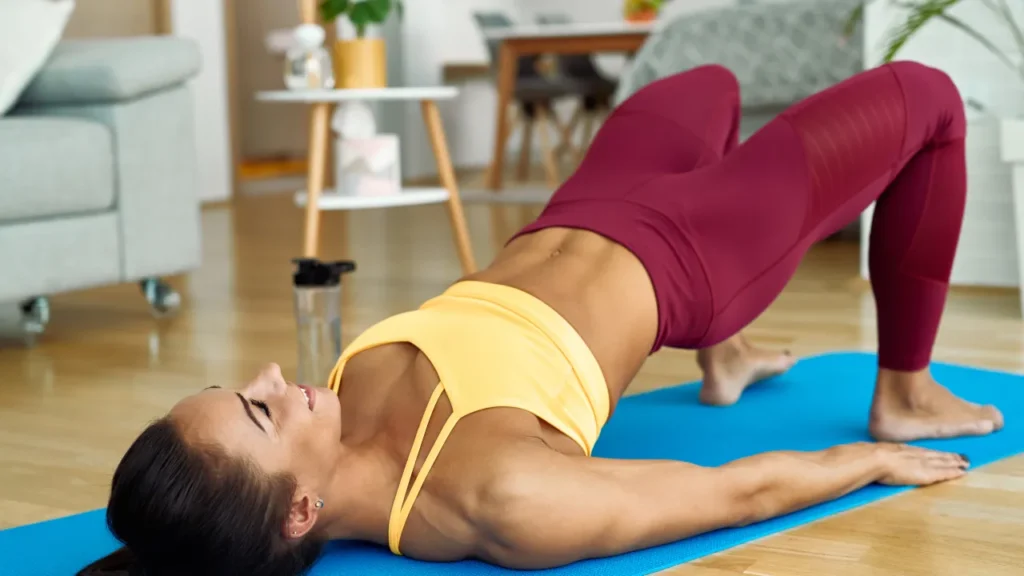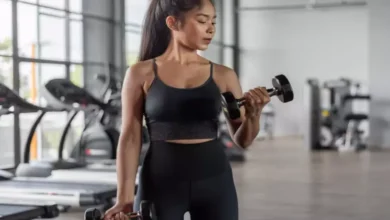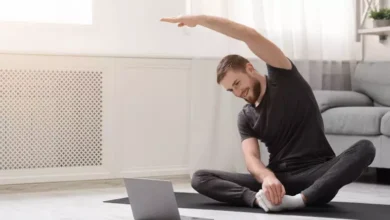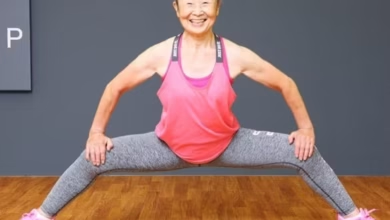The pelvic bridge, also known as the glute bridge, is one of the most effective exercises for strengthening the glutes, lower back, and core muscles. It requires no equipment, can be done anywhere, and suits both beginners and advanced fitness levels.
Beyond aesthetics, this movement improves posture, supports spinal stability, and helps prevent lower back pain. It’s widely recommended by personal trainers and physical therapists alike.
Also read: Source Reddit Follow our page

What Muscles Does the Pelvic Bridge Target?
When performed correctly, the pelvic bridge activates several key muscle groups:
- Gluteus maximus
- Hamstrings (back of the thighs)
- Lower back muscles
- Core muscles
- Inner thighs (especially when using resistance bands or a ball)
Together, these muscles contribute to better body alignment, injury prevention, and increased strength in daily movements.
Health Benefits of Doing Pelvic Bridges
Adding pelvic bridges to your workout routine can bring a wide range of physical benefits. Here are some of the most relevant:
- Strengthens the glutes, helping to prevent muscular imbalances
- Relieves lower back pain by activating stabilizing muscles
- Improves posture and core stability
- Low-impact and beginner-friendly, making it safe for most people
- Adaptable, with progressions using weights or single-leg variations
This exercise also supports rehabilitation programs, making it a safe choice for individuals recovering from injuries or with joint limitations.
Step-by-Step Guide to Perform the Pelvic Bridge
The traditional pelvic bridge can be done on the floor using a yoga mat or a towel. Here’s how to perform it with proper form:
- Lie on your back with your knees bent and feet flat on the floor, hip-width apart.
- Keep your arms extended beside your body, palms down.
- Contract your glutes and core, and lift your hips until your body forms a straight line from shoulders to knees.
- Pause at the top for 1–2 seconds.
- Slowly lower your hips without touching the floor.
- Repeat for 10 to 15 reps, completing 2 to 3 sets.
Breathe in as you lower and exhale as you lift.
Common Mistakes to Avoid
While simple, this exercise can be ineffective if performed with poor form. Here are common mistakes and how to fix them:
- Overextending the hips, which can strain the lower back
- Failing to activate the glutes, shifting the work to the spine
- Placing feet too far or too close, which affects balance
- Rushing the movement, reducing muscle engagement
Focusing on proper form ensures maximum results and reduces the risk of injury.
Variations to Challenge Your Body
Once you’ve mastered the basic movement, you can level up the pelvic bridge with a few variations:
- Single-leg bridge: Lift one leg off the ground while performing the movement
- Bridge with resistance band: Place a band around your thighs for added tension
- Weighted bridge: Add a dumbbell or barbell on your hips for more resistance
- Elevated feet bridge: Place your feet on a bench or step for deeper muscle activation
These variations help develop muscular endurance, strength, and stability.
When to Add Pelvic Bridges to Your Routine
Pelvic bridges are incredibly versatile and can be included in:
- Lower body strength workouts
- Core-focused routines
- Warm-up or cooldown sessions
- Rehabilitation and mobility programs
Since it’s a low-impact exercise, it can be done multiple times per week without overloading the body.
Can Pelvic Bridges Help With Posture?
Yes. One of the lesser-known benefits of pelvic bridges is their positive impact on posture. By strengthening the glutes and core, the exercise promotes spinal alignment and reduces the tendency to slouch, especially in people who sit for long hours.
Over time, this can also help relieve tension in the lower back and hips.
Final Thoughts: A Simple Move With Powerful Results
The pelvic bridge is proof that you don’t need complex exercises or fancy equipment to build strength and stability. Whether you’re just starting or already advanced, this movement belongs in your routine.
By doing it consistently and with correct form, you’ll experience improvements in posture, glute activation, and overall lower body performance.
See more CONTENT like this.

Hello! My name is Alan Teixeira and I am passionate about helping people live healthier, more balanced lives. From mindful eating to daily habits that promote physical and mental well-being, I believe that small, consistent changes can lead to powerful transformations.
I created this blog to share practical tips, reliable information, and thoughtful insights that can inspire you to take better care of yourself—with balance, mindfulness, and positivity.
If you are looking to improve your health, nourish your body, and build a lighter, more fulfilling routine, you are in the right place. Welcome!





